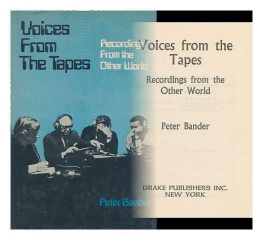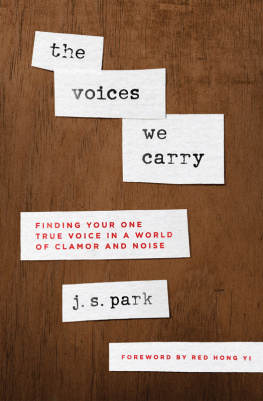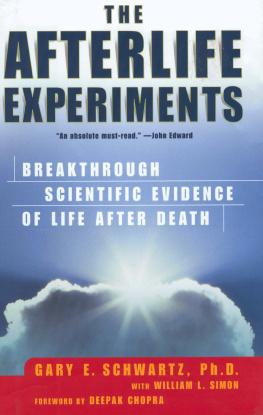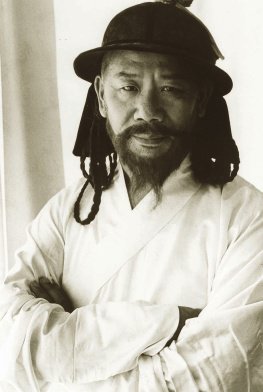Voices from the Tapes
Recordings from the Other World
Peter Bander
DRAKE PUBLISHERS INC. NEW YORK
Published in 1973 by Drake Publishers Inc. 381 Park Avenue South New York, N.Y. 10016
Peter Bander, 1973
Printed in the United States of America
To the memory of my friend THE RT. REV. MGR. STEPHEN OCONNOR V.G., P.R.C.C., R.N.
whose last message to me before his death was You must talk about Breakthrough
Introduction
Since 1959 a great number of scientists, electronics experts, psychologists and enthusiastic amateurs have been engaged in recording and analysing electronic Voice Phenomena which manifest themselves on ordinary electro-magnetic recording tape. After extensive research the theory was put forward that these might be the voices of people who are dead.
Although the Latvian psychologist Dr. Konstantin Raudive had published his own research findings in Germany under the title The Inaudible Becomes Audible, back in 1968, it is fair to say that the Voice Phenomenon only received world-wide recognition after the publication of a revised edition in the English language, called Breakthrough.*
* Published in the U.S.A. by Taplinger Publishing Company, New York
At the Frankfurt Book Fair in October 1969 the English publisher Colin Smythe was given a copy of the German book, which in turn, he handed to me for consideration. My first reaction was negative, because the claims made by the author appeared to me not only far-fetched but outrageous; although I knew some of Dr. Raudives collaborators personally and have always respected their scientific work, the thought of dead people communicating through a tape recorder seemed really too silly to be taken seriously.
My own position as the Senior Lecturer in Religious and Moral Education at one of the Colleges of the Cambridge Institute of Education and as a trained psychologist may well have prejudiced me in my reaction, but I advised Colin Smythe against publication of the book in the English language. Unknown to me, he carried out an experiment according to the instructions given in Raudives book which I had translated in parts in order to justify my decision. The first recording yielded a voice which was completely meaningless to him; after considerable persuasion I agreed to listen to the tape, fully convinced that he had imagined the whole thing.
As far as I remember I must have listened to the section on the tape which had been pointed out to me for about ten minutes, and I was on the point of giving up when suddenly I noticed the peculiar rhythm mentioned by Raudive and his colleagues. After a further five or six play-backs, out of the blue, I heard a voice. It was in German, and for reasons which I explain in my Preface to Breakthrough, I believed this to have been the voice of my mother who had died three years earlier. This was the first of a number of remarkable happenings which moved me to change my mind and recommend that Raudives work should be published in the U.K. and the U.S.A.
The narrative in Voices from the Tapes begins in March 1970; the events between Colin Smythes experiment and the research described in this book, including Raudives first visit to England on 12 and 13 December 1969 are also in my Preface to Break - through. Briefly, Raudive carried out experiments in the presence of a dozen or more scientists, theologians, psychologists and electronics engineers which were quite impressive,that is to say those which yielded results.
May it suffice to say that the experiments made with a diode were probably the best. Dr. Raudives diode which we had carefully examined and then had a replica built for the actual experiments, is basically a piece of germanium with some metal on it. It will conduct electricity one way and not the other. It is no more than what was known as the cats whisker in the crystal sets of early radio days. It acts in a similar way to a radio, but is not as sensitive. A radio would select a particular signal from all the signals that are picked up by the aerial. A diode, like the one used by Raudive, is a very crude and primitive gadget which has a slightly tuned coil and a three inch aerial. However, it is important to stress that this particular aerial is absolutely useless for picking up anything! Even if one stood next to a powerful transmitter the aerial needed to pick up a signal would have to be some six to eight feet There is no signal strong enough to induce a three inch wire to act as an aerial.
The microphone method (which, by the way, did not yield satisfactory results during this particular experiment) is the easiest but also an unreliable way of getting the Voice Phenomenon on tape. The microphone is used for recording sound vibrations (natural or supernatural) in a room at a particular time; it is merely connected to the tape recorder which is set for ordinary recording. Sound waves are picked up by the microphone which converts them into electronic impulses; these are amplified in the tape recorder and passed through the recording head which gives out a magnetic impulse. This in turn is recorded on the passing magnetic tape. The average microphone will pick up sound waves with a range from 60 cycles per second (low sounds) to 12,000 cycles (high sounds). This roughly corresponds to the range of the human ear. If there are any voices or noises on the tape, then all the people in the room where the recording is made, should be able to hear them when they are recorded, but this is not so.
Raudives Inter-frequency recordings (which according to the electronics engineers present could not possibly yield any result at the particular time when the experiment took place) are often carried out on the medium wave band. However, it is almost impossible to find a wave length which is not being used by a radio station. A true inter-frequency would be where nothing but a general atmospheric static noise is audible; this could be generated by a number of factors, for example a light which is switched on or atmospheric disturbances. Given a true inter-frequency, the radio would pick up the static noise but no particular signal. The process now is similar to that of a microphone recording. The amplified static noise is fed into the tape recorder and from the recorder head to the magnetic tape. The signals obtained are usually very faint and the experimenter has to listen to them for a considerable time in order to discover the meaning of the words. I have found it very helpful to cut the length of the tape on which the signal has manifested itself and form a loop by joining the two ends together. This enables the listener to concentrate on one particular section of the tape without having to move it forwards and backwards in the tape recorder. Alternatively, a recording can be transferred on to another tape several times over; although this enables the experimenter to amplify the voice, it should be borne in mind that the background noise and hissing will also be amplified and therefore the problem of identifying the sentence may have increased rather than diminished. When making up loops, they should just be long enough to go round the two spools and through the playback mechanism, and the usual playback time of a loop is roughly nine to ten seconds.
In September 1970 I resigned my academic appointment, not because of the Voice Phenomenon as some commentators have tried to make out, but for business reasons, and joined our publishing house full time. Circumstances beyond my control made it necessary to involve myself more and more with the Voice Phenomenon, until what had started as a publicity campaign for Raudives Breakthrough had turned into an independent investigation into the Phenomenon as such. The publicity which was given to the Voices in the press, on radio and on television forced me to continue my investigation for many months after publication of the book.









